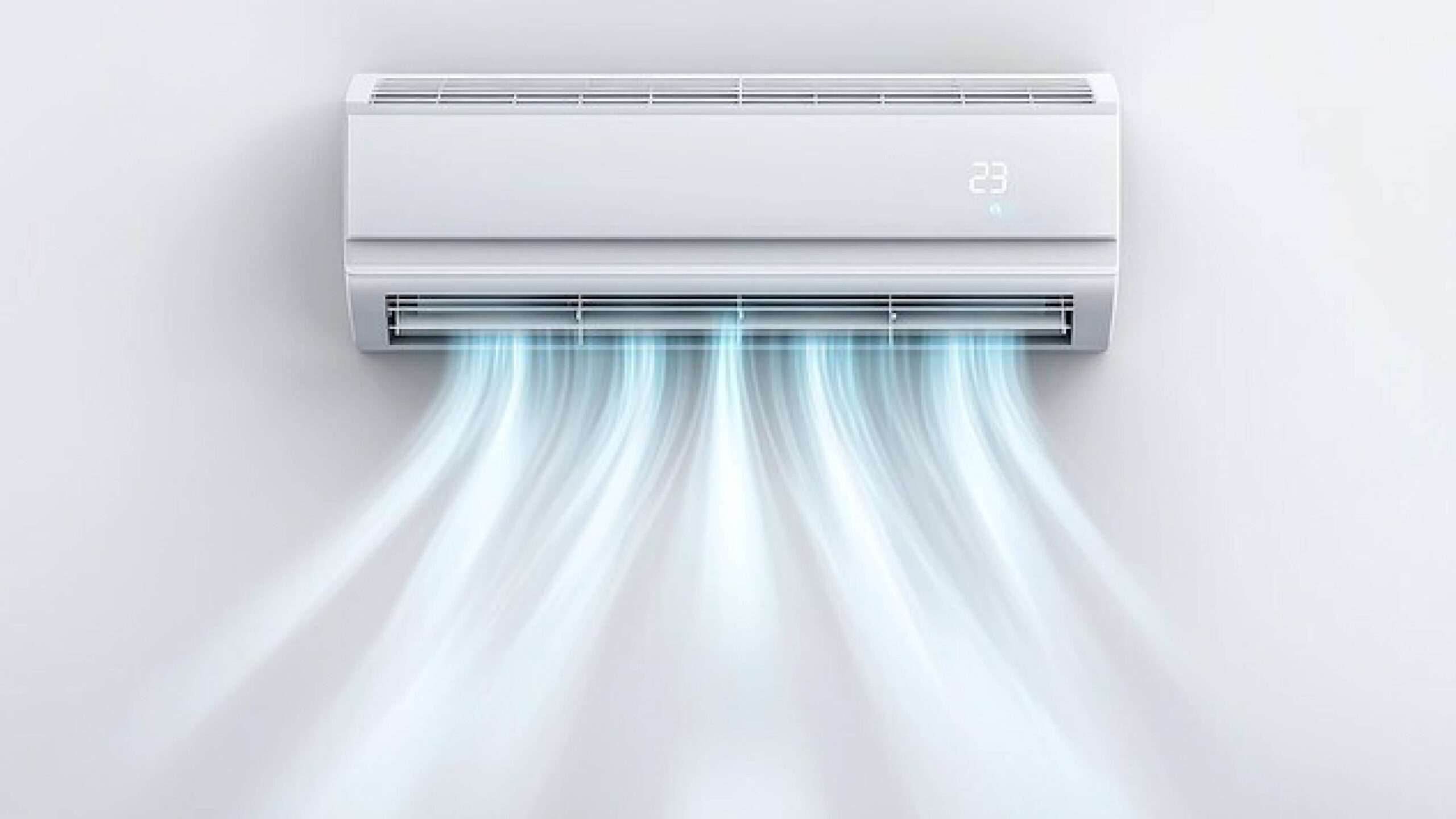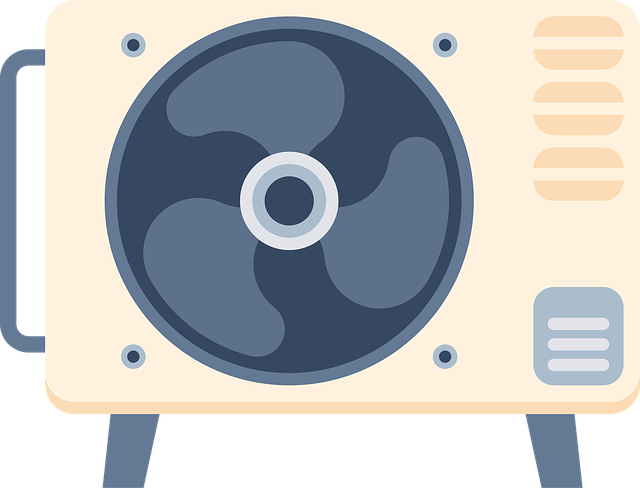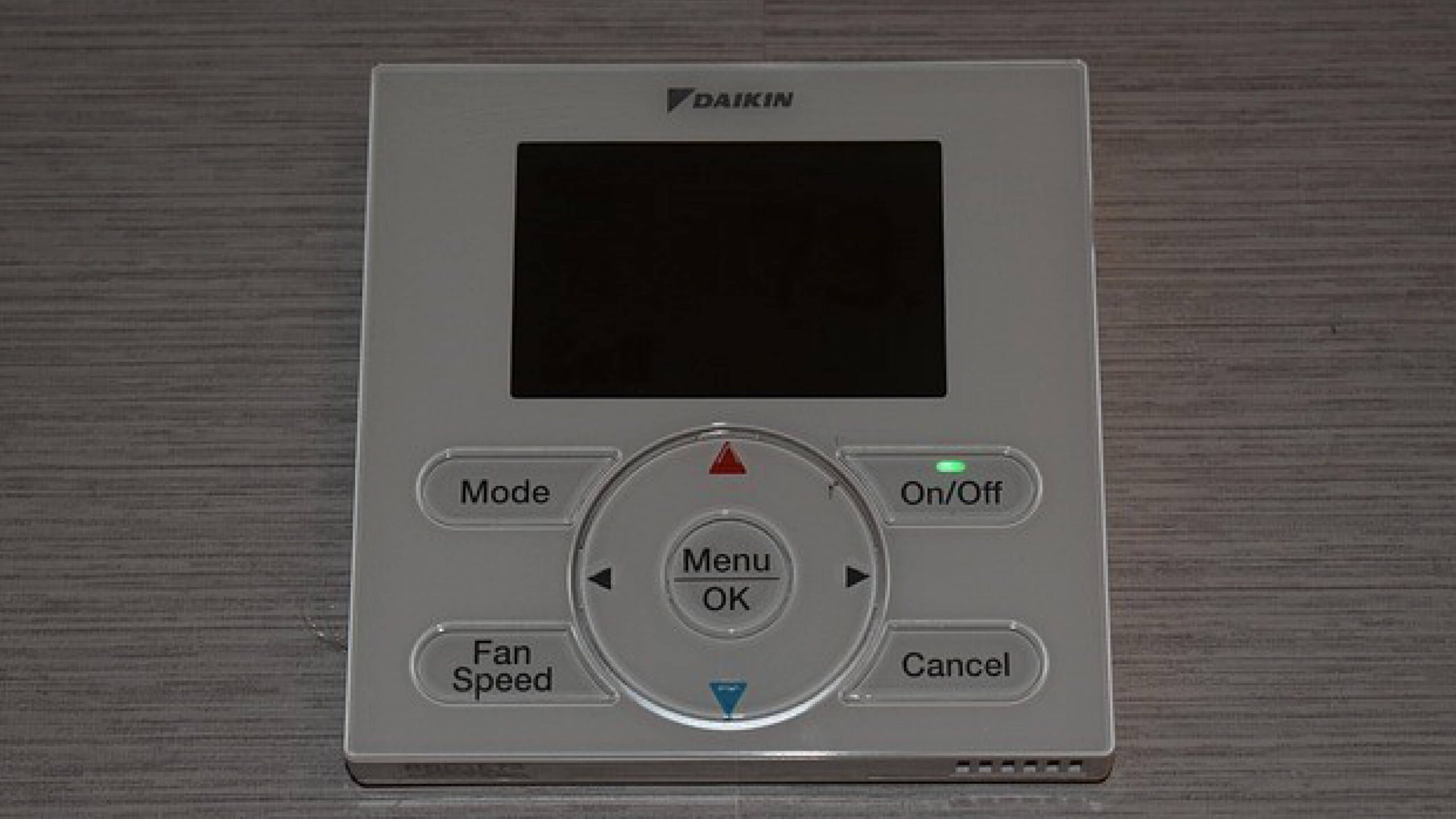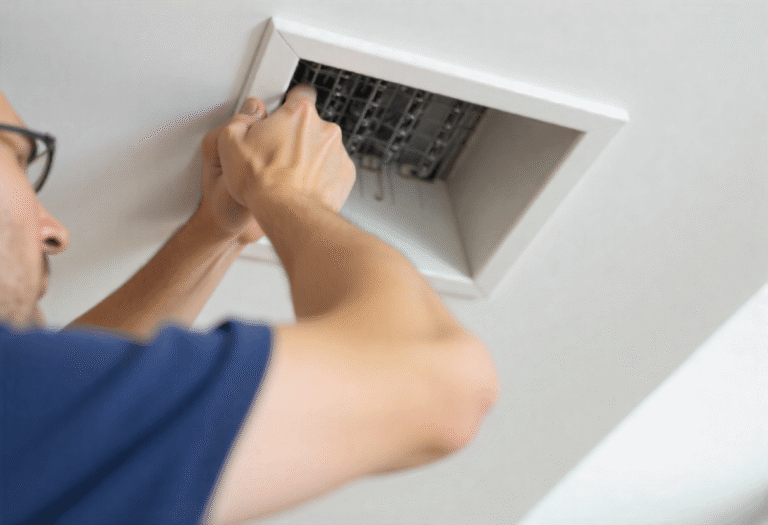For most people, air vents are just those openings that blow warm or cool air into your rooms, and that’s fair.
But what if I told you that there are different types of air vents, and all do completely different jobs.
For instance, some vents are there to pull stale air out and send it back to your HVAC system. At the same time, others push unwanted air and moisture outside your home.
Now, you might not have given much thought to this. But knowing the different air vent types, where they are, and how they work can actually help you:
- Keep your air vents clean and home more comfortable year-round.
- Improve your indoor air quality.
- Avoid common airflow problems (like that one room that’s always too hot or too cold).
- Even save a little money on your energy bill.
In this blog, I will break it all down. You’ll know:
- The three main types of vents in your home.
- The difference between a supply vent and a return vent.
- The different vent styles and which ones you have.
- What vent types are common in New Jersey homes.
So, let’s get started.
Key takeaways
- There are 3 main types of air vents: supply, return, and exhaust.
- Supply vents blow heated or cooled air into rooms.
- Return vents pull stale air back to your HVAC system.
- Exhaust vents remove moisture, odors, and heat from your home.
- Common NJ homes often use ceiling vents upstairs and floor vents downstairs.
- Older NJ homes may only have a few central vents due to retrofitting.
- Ductless systems are common where installing vents isn’t feasible.
- Clean and balanced vents improve airflow and lower energy costs.
- Mini-split units are an alternative to vents in tight spaces.
- The right vents depend on room type, airflow, and home design.
What are the different types of air vents?
There are three main air vents types, supply, return, and exhaust. For starters, supply vents blow air into your rooms, return vents pull it back to the system, and exhaust vents push unwanted air outside.
Here are the vent types and their function:
| Vent Type | Function | Common Locations | Connected To HVAC? | Example |
| Supply | Push warm/cool air into rooms | Floors, walls, ceilings | Yes | Floor register, ceiling diffuser |
| Return | Pull air back to system | Walls, ceilings, central hallways | Yes | Return grille, filter grille |
| Exhaust | Remove stale/moist air from home | Bathrooms, kitchens, attic, laundry | No (leads outside) | Bath fan, dryer vent |
Let’s take a closer look at how each one works.
1. Supply vents

Supply vents bring warm or cool air into your rooms. You can think of them as the delivery guys of your HVAC system.
So, when you turn your furnace or air conditioner on, the air comes out of these vents and keeps your home cozy.
What are the different types of supply vents?
While supply vents are one of the three air vent types, they are also of different kinds, including:
- Floor Registers: Push warm air up from the floor.
- Low/High Wall Registers: Blow air from walls.
- Ceiling Diffusers: Spread cool air from the ceiling evenly.
- Round Ceiling Diffusers: Circular vents that mix air well in open rooms.
- Linear Slot Diffusers: Long and sleek vents that spread air across wide spaces.
- Baseboard Registers: Sit low on the wall to push air out quietly.
- Toe-Kick Registers: Hidden under cabinets to warm floors in small areas.
- Smart Registers: Motorized vents that direct air where it’s needed most.
Here’s how different supply vent types are used
| Vent Style | Best For | Location |
| Floor Register | Heating first floors | Floor near windows |
| Ceiling Diffuser | Cooling upper floors | Ceiling |
| Wall Register | General HVAC use | High or low wall |
| Baseboard Register | Quiet heat in older homes | Along baseboards |
| Toe-Kick Register | Small spaces/kitchens | Under cabinets |
| Smart Register | Zoned airflow control | Any room |
Where will you find supply vents?
You’ll usually find supply vents in spots where they can spread air evenly through the room. This includes:
- On the floor near windows or exterior walls (especially in older homes)
- High up on the wall (popular in modern homes)
- In the ceiling (often in multi-story houses or homes with ducts above)
Not sure if you’re looking at a supply vent?
Here’s a super simple test: Take a tissue or a small piece of paper, and hold it in front of the vent when your system is running. If the paper blows away from the vent, you’ve found a supply vent.
Schedule Your Free Estimate Today
Contact us to improve your indoor air
quality with our expert cleaning services in NJ.
2. Return vents

Unlike supply vents that bring air in, return vents pull air out of the room and send it back to your HVAC system to be heated or cooled again.
These help your HVAC system have enough air to supply, circulate air properly, and keep your indoor air fresh by cycling it through your filters.
What are the different types of return vents?
Just like supply vents, return vents are also of different kinds, which include:
- Standard Return Grilles: Pull used air back from walls or ceilings.
- Filter Grilles: Return vents with built-in filters for easy cleaning.
- High/Low Return Pairs: Let you switch air pickup for summer or winter.
- Central Hallway Return: One big return vent serving the whole house.
- Transfer Grilles / Jump Ducts: Help air move between rooms when doors are closed.
Here’s how different return vent types are used
| Type | Feature | Where It’s Used |
| Standard Return Grille | Basic air return | Walls/ceilings |
| Filter Grille | Has built-in air filter | Near HVAC unit or central hallway |
| High/Low Return Pair | Seasonal air pickup switching | Homes with two-level return setup |
| Central Hallway Return | One vent serving large area | Hallways in smaller homes |
| Transfer Grille / Jump Duct | Allows airflow between closed rooms | Bedrooms, offices without return vents |
Where will you find return ducts?
Return vents are usually larger than supply vents, and placed in the following areas of your home:
- Central areas like hallways or big rooms
- High on walls or low near the floor, depending on your system’s design
Curious how to spot one?
Try the same tissue test. But this time, if the paper gets sucked toward the vent, it’s a return vent.
Also, most return vents don’t have a lever or damper. And that’s intentional because you don’t want to block or close return vents, as that can reduce air pressure, system efficiency, and even cause damage to your system.
3. Exhaust vents
Exhaust vents have a different job altogether, which is kicking unwanted air out of your house completely. This includes:
- Moisture from hot showers
- Cooking smells and smoke
- Lint and heat from your dryer
- Hot attic air that builds up in summer
Also, unlike supply and return vents, which are part of your heating/cooling loop, exhaust vents connect to the outside. They send air through ducts that exit your home and help prevent moisture damage, odor buildup, and air quality issues.
What are the different types of exhaust vents?
Different exhaust vents that you’ll find in your home include:
- Bathroom Exhaust Fan: Removes steam and moisture after showers.
- Kitchen Range Hood: Vents cooking smells, grease, and heat.
- Dryer Vent: Sends hot and damp air and lint outside.
- Attic Vents (Ridge/Soffit): Let heat and moisture escape your attic.
Where will you find exhaust vents?
You’ll find exhaust vents in very specific locations, such as:
- Bathroom ceilings (part of the bath fan system)
- Above the stove (your range hood)
- Behind the dryer
- In the attic (attic fans or passive exhaust vents)
Here’s how you can spot one:
Look for vents that seem to connect to something with a motor or fan, especially if they’re:
- Mounted on the ceiling or high on a wall
- Near appliances or moisture-heavy areas
Pro tip: If they don’t blow air in or suck air back into your HVAC system, they’re exhaust vents.
Bonus: Exhaust vents are more important than you might think
Exhaust vents are your first line of defense against mold, mildew, and musty odors.
How?
You see, bathrooms without working exhaust fans can develop peeling paint, damp walls, or worse, hidden mold inside walls. The same thing goes for kitchens and laundry rooms.
Now, exhaust vents remove moisture early on and help keep the space dry, preventing all of these problems down the road.
Wondering how much you’ll likely pay to get these vents cleaned?
Go through my blog on air vent cleaning cost in New Jersey and know the latest price average.
What are the types of air vents common in New Jersey homes?

Although all vents work the same way, i.e., blow air in, pull it back, or push it outside, the way they are installed can vary a lot. And this depends largely on where you live.
Take New Jersey, for example, where age of the home, type of heating system, and available duct space all play a big role in where vents are placed.
Let’s take a look at what air vent types are common in the state.
1. Two-story homes
In most two-story homes across New Jersey, the supply vents upstairs are often in the ceilings. That’s because it’s easier to run ductwork through the attic than behind finished walls.
At the same time, the supply vents downstairs are usually on the floor or low on the wall. This is mainly because the ducts run either through the basement or crawlspace.
Talking about return vents, most two-storied NJ homes don’t have return vents in every single room. Instead, there’s usually one large return grille per floor, usually in a hallway or open area.
2. Older NJ homes
A lot of homes in New Jersey were originally built with boilers and baseboard heat, and not central air systems. Here, air vents were added later, often during renovations or when central AC was retrofitted.
Now, when centralized HVAC was added to older homes, it was much easier to run ducts through the attic to reach upstairs rooms. That’s why you’ll often see ceiling vents or diffusers in second-floor bedrooms.
However, you might only see a few wall or floor vents downstairs, often in main rooms like the living room or dining room.
Also, older homes might only have one big return vent, and it’s usually somewhere on the first floor.
3, Homes with limited duct space
Not every home in New Jersey has the space to run full-size ductwork to every room. And In these homes, HVAC installers got a bit creative.
How?
You might notice some rooms have no vents whatsoever, but instead have a sleek wall-mounted unit.
That’s a mini-split system or a ductless system which provides both heating and cooling without needing air vents at all. They are popular in older homes, bonus rooms, and renovations where adding ductwork would be too invasive or expensive.
Also, some homeowners install transfer grilles or jump ducts to help with air movement in homes with limited return vents.
In short, here are the common vent setups in NJ homes
| Home Type | Supply Vent Location | Return Vent Setup | Notes |
| Two-Story Home | Ceiling (upstairs), floor (downstairs) | One large return per floor | Ductwork routed through attic/basement |
| Older NJ Home | Limited vents, retrofitted later | One central return on first floor | Often upgraded from boiler/baseboard systems |
| Homes w/ Limited Duct Space | Mini-splits or ductless units | Jump ducts or transfer grilles | Great for renovations or tight spaces |
How to choose the right air vent for your NJ home?
More than look, picking the right air vent is about comfort, airflow, and making sure every room feels just right. And to that end, here’s how you can choose the right air vents for your home:
1. They should be compatible with the room
For starters, different rooms need different vents. Here are a few examples:
- Bedrooms: Smaller vents work best so you don’t wake up freezing from a blast of cold air.
- Living rooms: Bigger spaces need bigger vents (or more of them) to stay comfy.
- Bathrooms: Always need an exhaust vent to get rid of steam and smells.
So, you should make sure that the vents are made for the specific room.
2. They should complement the airflow
Air behaves in predictable ways, ie., cool air sinks and warm air rises.
This means, if you’re cooling a second-floor room, ceiling vents work best. Similarly, if you’re heating a space on the first floor, floor vents are ideal.
3. They should keep the airflow balanced
Great airflow is all about balance. So, you should try to balance comfort and efficiency.
For instance, if you’ve got too many supply vents and not enough returns, you’ll get weak airflow and uneven temperatures.
Also, get too many returns without enough supply vents, and your room might never feel warm or cool enough.
5. They should go well with your home’s aesthetics
Vents aren’t just functional, they’re also a part of your interior space.
And to that end, I suggest you get sleek flush-mount vents or covers that you can paint to match your walls, ceilings, and floor.
Not sure what kind of vents are right for your home?
Reach out to our team and know the ideal vent type for your space.
Schedule Your Free Estimate Today
Contact us to improve your indoor air
quality with our expert cleaning services in NJ.
Wrapping it up
At first look, the vents around your home might seem like small forgettable details. But by now, you know they’re actually a huge part of what keeps your space comfortable, your air clean, and your energy bills in check.
And the best part is that once you know what’s what, it’s much easier to:
- Spot problems early
- Keep air flowing freely
- Work with your HVAC technician when something needs fixing
Got more questions or need a complete air vent cleaning for your NJ home?
You can get in touch with us!
At Clean Air Technologies, we are New Jersey’s most seasoned HVAC cleaning and maintenance professionals with about three decades of expertise. And we’ve got all your HVAC upkeep needs covered on a budget.
FAQs about types of air vents
What’s the difference between a vent, a register, and a grille?
Although they look similar, vents, registers, and grilles, all serve different purposes. Here’s how:
- Vent is the general term for the opening where air comes in or goes out.
- Register is a vent with an adjustable damper (you can open or close it).
- Grille is a vent cover without a damper. It’s fixed in place.
How do I know if a vent is supply or return?
Here’s how you can tell the difference between supply and return vents:
- Supply vents blow air out (you’ll feel airflow when the system is running).
- Return vents pull air in (you won’t feel air blowing out).
A quick hand test while the system is on can tell you which is which.
Should I close vents in unused rooms to save money?
Nope, closing vents can actually raise air pressure in your ducts, cause leaks, and make your HVAC system work harder.
How often should I clean my vents?
I suggest you give vent covers a quick vacuum every couple of weeks and a deeper wash every few months. And if you see dust building up fast, your air filter may need changing more often.
Why is one of my vents blowing weak air?
This could be:
- A closed damper.
- A blocked duct.
- Dirty air filter.
If the issue affects multiple vents, it’s time to call an HVAC technician.
Are there special vent types for allergies or dust?
Yes, some vent covers have built-in filters designed to trap dust, pollen, and pet hair. These can help improve indoor air quality but should be cleaned or replaced regularly.
Do vents affect my energy bills?
Absolutely.
Clean and unblocked vents help your HVAC run efficiently, which can reduce energy costs. Dirty or blocked vents, at the same time, force the system to work harder, wasting energy and money.




